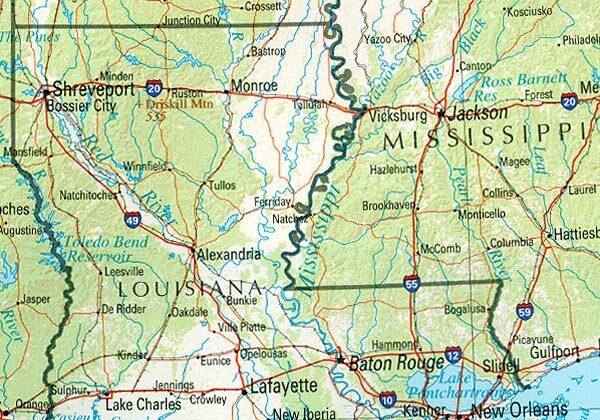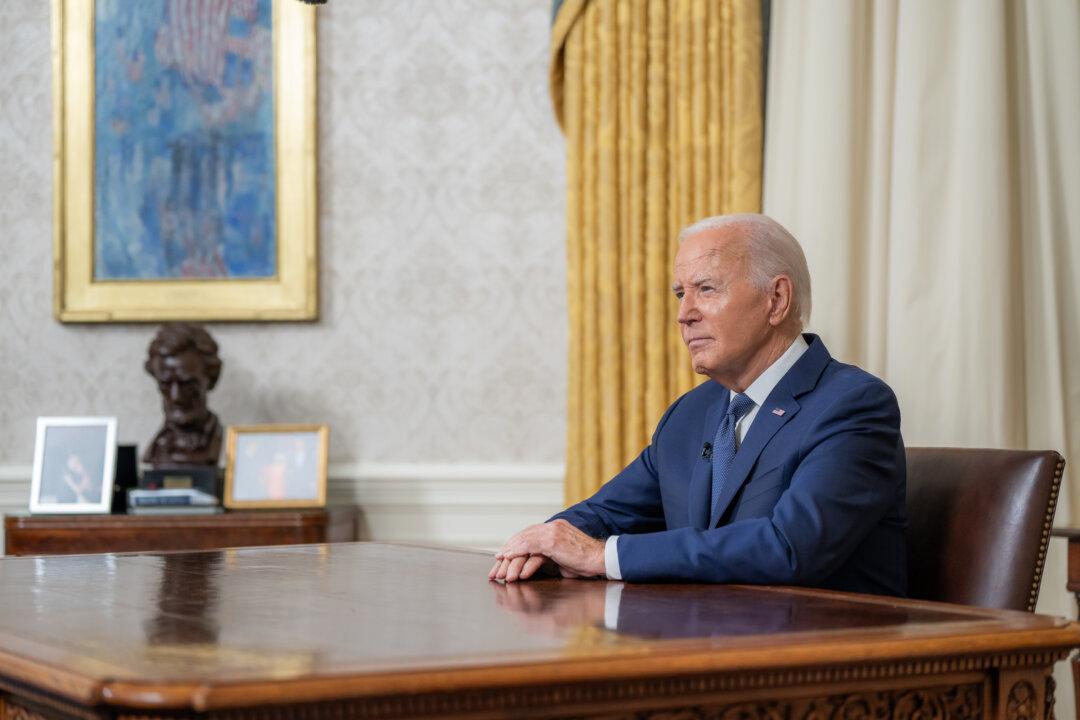LAPLACE, La.—Along Interstate 10 where the Mississippi River threads from Baton Rouge to New Orleans, ever-expanding petrochemical and other industrial projects have long been fought by environmental activists, who have saddled the stretch with the disputed moniker “Cancer Alley.”
Louisiana Attorney General Jeff Landry calls the move a breathtaking regulatory overreach, noting that the state has complied with existing environmental regulations.
But the EPA has notified Louisiana that it has subjected the state’s permitting process to a “civil rights analytical framework.” Just what that framework is, who wrote it and when are unclear, according to Landry’s office, and the EPA declined to discuss the matter or answer questions, citing the pending agreement and legal challenges.
The new approach is being met with skepticism from critical attorneys familiar with environmental laws.
“This is not the way the EPA typically operates, and it looks like they are trying to expand their authority by using their muscle without clear authorization from Congress to infringe on a state permitting agency,” said Jeff Clark, who served in the Trump administration in the Justice Department’s Environment and Natural Resources Division and is now with the conservative Center for Renewing America. “There is no authorization to apply cumulative impact analysis to Title VI regulations.”
“I’ve never seen this,” said Steve Milloy, an attorney who has written extensively about what he and others characterize as EPA overreach. “Environmental justice is a hoax and the EPA has no statutory authority to pursue it with permits. The EPA is pushing the envelope here to see what it can get away with. They are trying to strongarm the state.”
At issue is the permitting process covering a cluster of seven existing plants in the River Parishes. The two pending projects would mark a huge expansion. The first is a $9.4 billion Formosa Plastics complex in St. James Parish, the second a $400 million grain terminal in St. John the Baptist Parish. In addition, an existing plant is being targeted by the EPA in its Title VI allegations: the Denka Performance Elastomers factory, which has been in St. John Parish for decades and has been partly owned by a Japanese company since 2015.
For decades activists have alleged that the petrochemical industry is responsible for cancer in the local population, especially minorities. In 1997, however, the Journal of the Louisiana Medical Society found almost no evidence that the incidence of cancer was higher in the River Parishes than in the rest of the United States.
Denka paid for another study, conducted by Ramboll Environ, that concluded the EPA was relying on flawed science in falling in with the age-old cancer allegation.
To the extent that health issues are a factor in River Parishes, they are caused by other factors, not environmental racism, according to several EPA critics. Poverty, smoking, obesity, and other factors are the likely culprits of health problems among the River Parishes, not the chloroprene, according to them.
“Poor people in the world consume less healthcare,” said Benjamin Zycher, a fellow at the conservative American Enterprise Institute. “There’s no explicitly legal authority here. It’s just the EPA trying to get away with it on environmental justice grounds.”
Many local leaders and residents reject the idea that they live in “Cancer Alley.”
“These outside environmental groups have a blind eye when it comes toward any partnerships with the local community,” said Jason Amato, a councilman in St. James Parish now running for the state legislature. Amato is a retired employee of the oil industry.
“These activists continue with the EPA mounting a legal battle against the industry and they keep changing the rules,” he said.
The EPA did not specify who had initially filed the complaints that made it look into the alleged civil rights violations, but one group that has targeted the industry is Concerned Citizens of St. John the Baptist Parish. The group did not respond to a request for comment, and Lydia Gerard, its founding member, did not return a phone call.
During a reporter’s recent visit to the area, several residents who support the industry, but declined to speak on the record, pointed to ads atop the front page of the local St. James News Examiner-Enterprise and questioned where the funding for the attacks is coming from.
Since 2021, the Examiner-Enterprise has editorialized against what its editor, David Reynaud, calls a largely manufactured opposition. He says that while the activists have achieved improvements in overall safety and risk assessment at the various plants, they do not reflect the majority opinion of the parishes, which supports the industry and its economic benefits.
“They’ve drummed up a lot of fear around here and grotesquely overrated the risk,” he said. “There’s been a lot of out-of-state money poured into this.”
As the EPA is invoking Title VI on environmental racism grounds, it is relying on old-fashioned pressure, too. On Feb. 28, the agency and the Department of Justice filed a complaint against Denka alleging it presents “an imminent and substantial endangerment to public health and welfare due to the cancer risks from Denka’s chloroprene emissions.”
A Denka statement rebutted the charges against it.
“EPA’s allegations in the lawsuit directly contradict the agency’s own prior statements, years of reliable health data relating to St. John the Baptist Parish where the facility is located, comprehensive studies regarding workers in the U.S. chloroprene industry showing no connection between chloroprene and cancer, and the best available science on the potential risks of chloroprene,” the company said. “Notably, EPA’s lawsuit does not allege rates of cancer incidence in the area are higher than average, and in fact, data from the Louisiana Tumor Registry confirms that cancer rates in the St. John the Baptist Parish are in the ‘bottom 25 percent’ among Louisiana parishes in its most recent report.”
The Denka plant is small compared to some other operations in the River Parishes—engineering complexes that present a dizzying array of pipes and stacks, along with grain silos and dockyards of the Port of South Louisiana stretch. They wind along the Mississippi following the same track that plantations once did in the first half of the 19th century.
Today, those former grand plantations account for what tourism there is in the parishes, and represent to activists the legacy of environmental racism that they see as still at work in the area.
The companies favor the area because of its existing infrastructure—including railroads that have followed the Mississippi and the highway for decades, making the spot an ideal transportation hub.
All of the recent activity—the novel Title VI regulatory claims by the EPA, along with its February motion—fall under the rubric of the Biden administration’s push for “environmental justice” launched last May. EPA administrator Michael Regan, who came to the job after eight years with the left-wing Environmental Defense Fund as well as a regulatory stint in North Carolina, vowed the action was neither “the first nor the last” they would take in the River Parishes. Vanita Gupta, Biden’s associate attorney general, who served in the Department of Justice Civil Rights Division under President Obama, has adopted a similarly tough stance.
“We allege that Denka’s emissions have led to unsafe concentrations of carcinogenic chloroprene near homes and schools in St. John the Baptist Parish, Louisiana,” Gupta said in a press release. “The Justice Department’s environmental justice efforts require ensuring that every community, no matter its demographics, can breathe clean air and drink clean water. Our suit aims to stop Denka’s dangerous pollution.”
According to U.S. Census data, the population in the River Parishes is, in fact, somewhat better off than that of New Orleans, where the environmental activists behind the complaints are headquartered. St. John the Baptist has roughly 42,000 people, of whom 59.1 percent are black, and a median income of nearly $62,000. Roughly 16.8 percent of the population there is poverty-stricken.
The Sunshine Project, the name given to the Formosa Plastics complex planned by FG LA LLC, claims it plans to invest more than $9 billion in a project that will bring 1,200 new jobs to the River Parishes, with an average salary of $84,500. Louisiana’s Democratic Gov. John Bel Edwards has supported the program.
Janile Parks, director of community and government relations for FG LA LLC, said the fights the company has had to undertake with the U.S. Army Corps of Engineers, federal prosecutors, and the EPA are based on false premises.
“FG is disappointed by the delays in project progress but confident the project will prevail,” she said. “We do not intend to give up the fight for this important economic development project that will benefit the people of St. James Parish and Louisiana.”
“Instead of ‘cancer alley’ they should call this ‘opportunity alley,’” Councilman Amato said.






